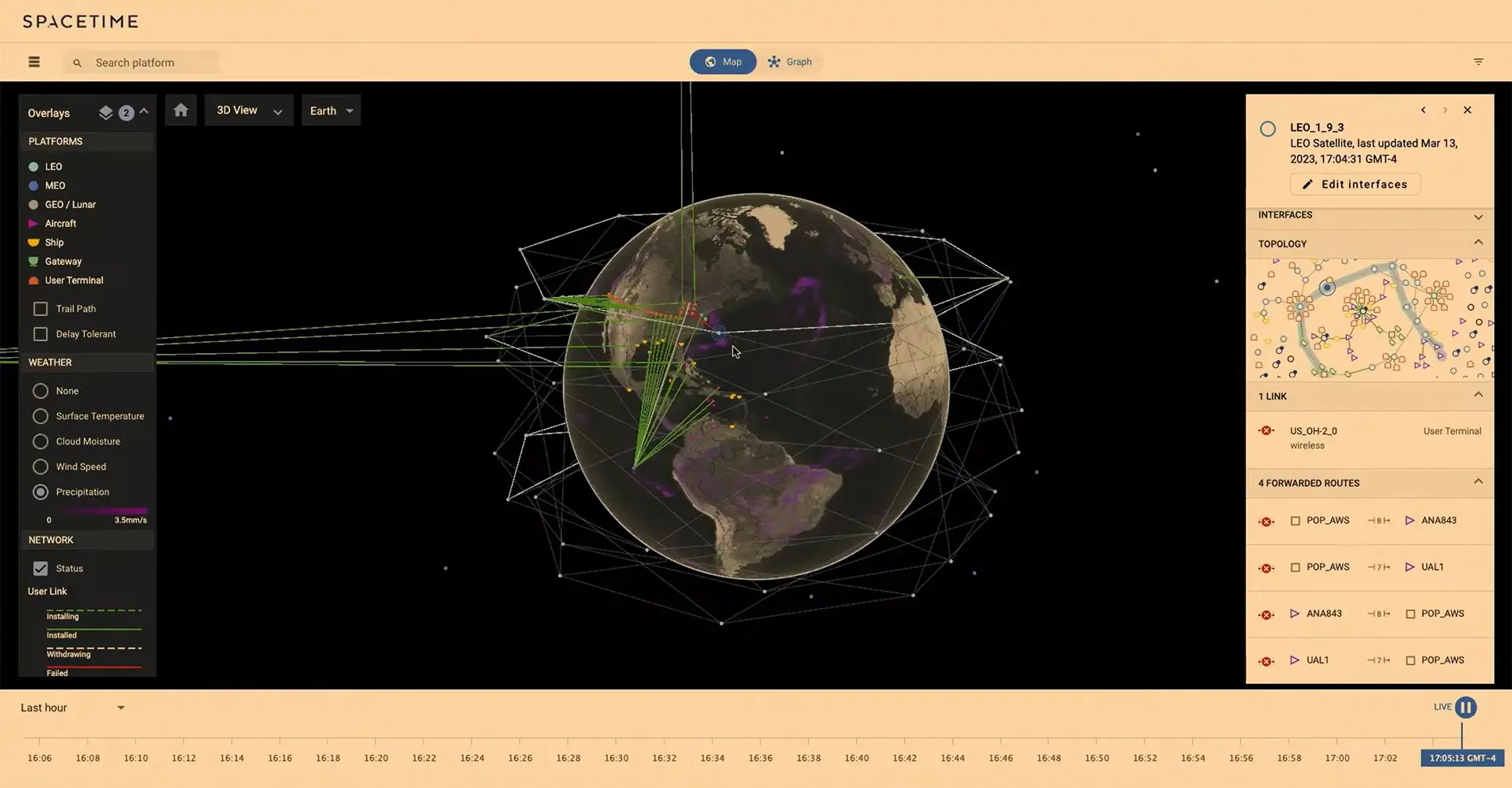


|
||
|
||

Has Aalyria’s optical transmission technology eliminated the space-Earth communication bottleneck?

Aalyria, a new space Internet company, just burst out of stealth mode. It is based on work done on Alphabet’s “moonshot” Project Loon and Alphabet transferred almost a decade’s worth of technology IP, patents, office space, and other assets to Aalyria in return for an equity stake in the company. Spacetime is Aalyria’s intelligent network orchestration technology, and Tightbeam is its advanced atmospheric laser communications technology.
Spacetime is a multi-layer, multi-orbit, software-defined networking system that was developed for Project Loon, one of Google’s early efforts at connecting rural areas and developing nations. At one time, Telesat had agreed to use the Google networking system to link their low-Earth orbit and geostationary satellites, but Telesat has not yet launched its LEO constellation.
With the demise of Project Loon, the network management software was orphaned, but development continued, and Aalyria says it now “optimizes and continually evolves the antenna link scheduling, network traffic routing, and spectrum resources—responding in real-time to changing network requirements.” That sounds like a tall order with constantly moving satellites, planes, ships, and vehicles, but the foundation was laid with drifting balloons.
This is an impressive claim, but it is not unique. Others are working on multi-orbit broadband networks and OneWeb recently signed an agreement for seamless interoperability between their low-Earth orbit satellites, Intelsat geosynchronous satellites, and airplanes.

Tightbeam is a different story—optical links are beginning to be used between satellites in space, but as far as I know, no one is currently transmitting production volume optical data between satellites and Earth. Optical communication is winning out over radio frequency links in space because they are faster, more secure, and harder to jam than radio frequency, and the terminals have lower mass and consume less power. What’s not to like? Unfortunately, rain, clouds, dust, or heat distort and attenuate optical signals.
One can imagine building ground stations in places with dry climates and routing around bad weather when it occurs, but Aalyria says they have developed novel hardware and algorithms that correct for these distortions enabling them to transmit data through the atmosphere at speeds up to 1.6 terabits per second over hundreds of miles.
Recently capacity limitations have slowed Space Starlink, triggering a shift to affordability-based pricing, and performance has continued to decline since that time. Over-subscription in a local area or cell contributes to that decline, but, as Mike Puchol points out, scarcity of radio frequency spectrum for traffic between satellites and terrestrial gateways is also a constraint. Gateway congestion is already a problem, and Starlink and others are planning to launch many more satellites. Puchol predicts that we will have optical links between satellites and gateways and speculates that they may use ultraviolet frequencies. The Chinese are also working on optical communication and they have conducted satellite-ground high-speed laser tests.
Regardless of who does it first, we will eventually see optical links between satellites and the ground. I’ve not seen any description of Tightbeam technology or results of tests and demonstrations, but if Aalyria’s technology lives up to its description, it is important.
A few miscellaneous points:
Update Oct 8, 2022:
Tim Deaver, VP of Strategic Solutions at Mynaric says they are working on space-ground, air-ground, and ground-ground terminals. Will they be able to write terminal drivers and have them work in a Spacetime network?
Update Oct 30, 2023:

Aalyria CTO Brian Barritt described and demonstrated Spacetime in a terrific keynote talk at the Satellite 2033 conference. He reviewed SpaceTime’s history, scope, and features, but the highlight of the talk was a live demonstration of a hypothetical network with mobile and fixed assets on the ground, sea, air, LEO, and the Moon. Stay tuned for a promised Fall update presentation on Tightbeam.
Sponsored byVerisign

Sponsored byWhoisXML API

Sponsored byIPv4.Global

Sponsored byCSC

Sponsored byRadix

Sponsored byDNIB.com

Sponsored byVerisign
